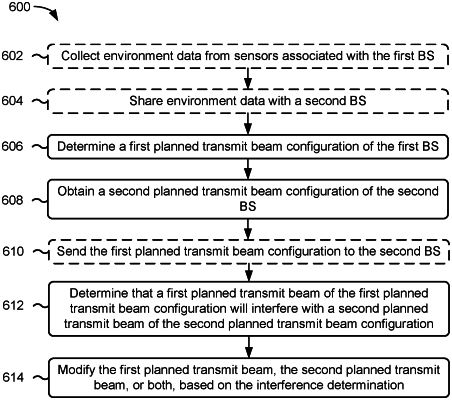| CPC H04B 17/373 (2015.01) [H04B 17/382 (2015.01); H04W 16/14 (2013.01); H04W 16/22 (2013.01); H04W 72/0453 (2013.01)] | 34 Claims |

|
1. A method of wireless communication performed by a first base station (BS), the method comprising:
determining a first planned transmit beam configuration of the first BS based at least in part on environment data collected from sensors associated with the first BS, from sensors coupled to a user equipment (UE) served by the first BS, or from combinations thereof;
obtaining a second planned transmit beam configuration of a second BS;
determining that a first planned transmit beam of the first planned transmit beam configuration will interfere with a second planned transmit beam of the second planned transmit beam configuration; and
modifying the first planned transmit beam, the second planned transmit beam, or both, based on the interference determination.
|